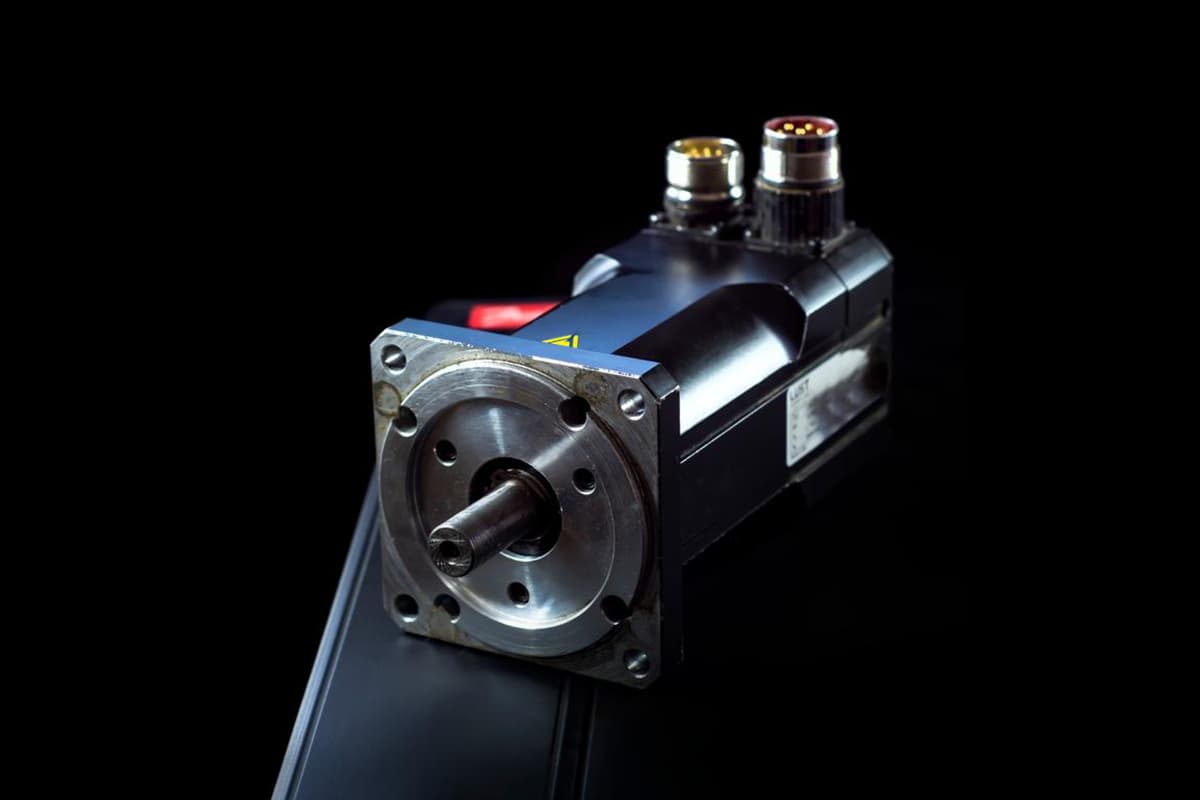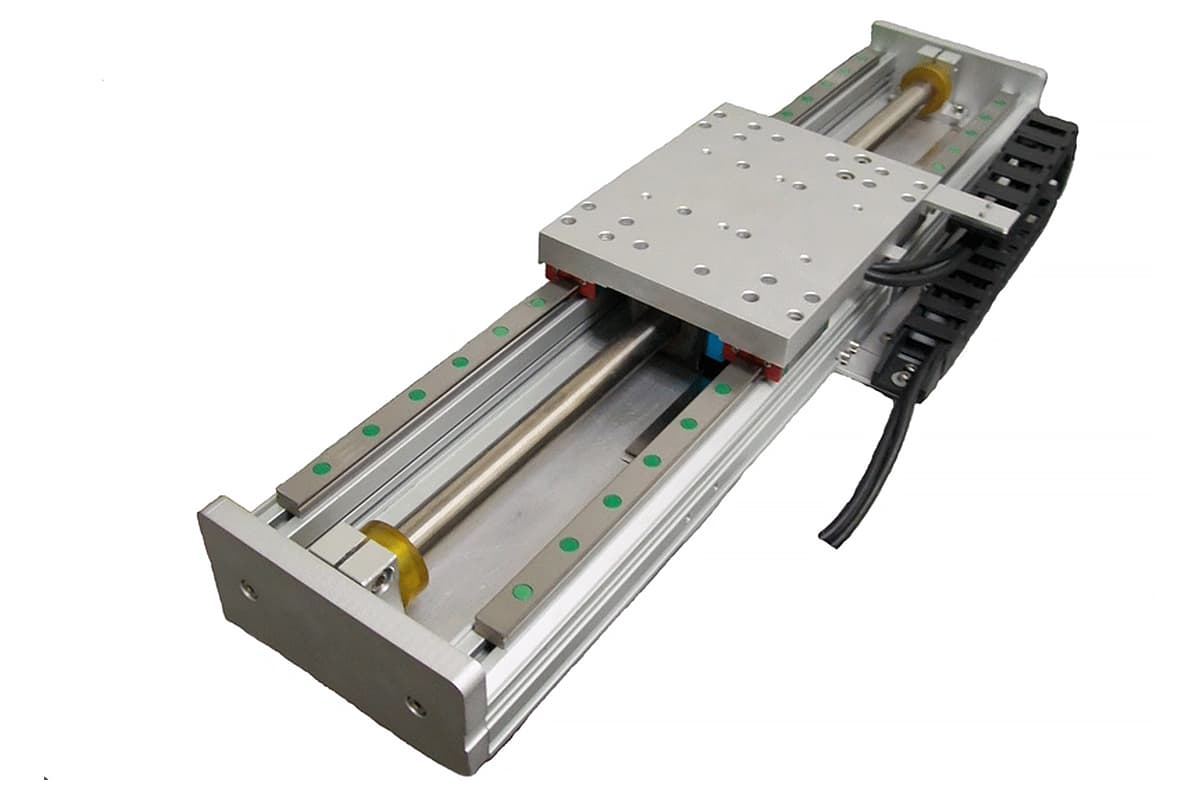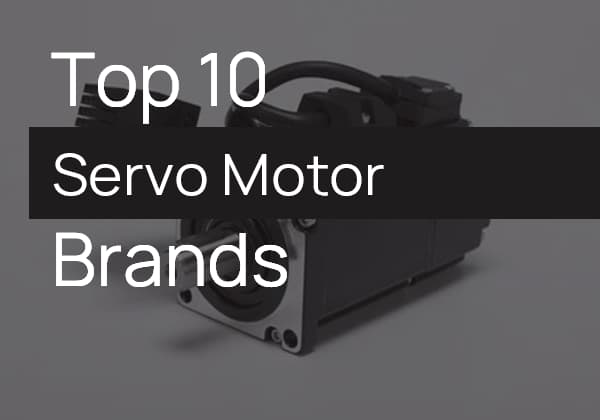
Ever wondered how trains can float above tracks or how robots achieve precise movements? This article unveils the fascinating world of linear motors, explaining their principles, types, and unique advantages. You’ll discover how these motors revolutionize industries with their speed, precision, and efficiency. Dive in to learn how linear motors are shaping the future!

Linear motors are devices that directly convert electrical energy into linear mechanical motion without any intermediate conversion mechanisms. They can be thought of as rotary motors that have been cut radially and unfolded into a flat plane.
Also known as linear motors or linear actuators, the most common types are flatbed, U-channel, and tubular. The typical coil configuration is three-phase, with brushless phase switching achieved through Hall effect sensors.

Linear motors are often simply described as rotary motors that have been unrolled, operating on the same principle. The forcer (rotor) is made by compressing coils together with epoxy material; the magnet track consists of magnets (usually high-energy rare earth magnets) affixed to steel.
The motor’s forcer includes coil windings, Hall effect sensor circuit boards, thermal regulators (temperature sensors monitoring temperature), and electronic interfaces. In rotary motors, the forcer and stator require rotary bearings to support the forcer and maintain the air gap of the moving parts. Similarly, linear motors need linear guides to maintain the forcer’s position in the magnetic field produced by the magnet track.
Like the encoders mounted on the shafts of rotary servo motors to feedback position, linear motors need linear encoders to directly measure the position of the load, thereby improving load positioning accuracy.
The control of linear motors is similar to that of rotary motors. Like brushless rotary motors, the forcer and stator are mechanically unconnected (brushless).
Unlike rotary motors where the forcer rotates and the stator remains fixed, in linear motor systems, either the magnet track or the thrust coil can move (most positioning systems have a fixed magnet track and a moving thrust coil). In motors with moving thrust coils, the weight of the thrust coil and the load is very small.
However, this requires highly flexible cables and their management systems. In motors with moving magnet tracks, not only the load but also the weight of the magnet track must be borne, eliminating the need for a cable management system.
Similar electromechanical principles are used in both linear and rotary motors. The same electromagnetic forces that produce torque in rotary motors generate linear thrust in linear motors.
Therefore, linear motors use the same control and programmable configurations as rotary motors. The shape of linear motors can be flatbed, U-channel, or tubular, depending on the specific requirements and working environment of the application.
The operating principles of linear motors can be categorized into two main types: one where the mover (moving part) travels within a magnetic field, known as the maglev linear motor, and the other where the mover remains stationary within the magnetic field and is propelled by electromagnetic force, known as the electromagnetic thrust linear motor.
(1) Maglev Linear Motor
The principle behind the maglev linear motor involves using magnetic fields to suspend the mover in the air, thereby achieving contactless, frictionless motion. This type of linear motor mainly includes Permanent Magnet Synchronous Linear Motors (PMSLMs) and Electromagnetic Suspension Linear Motors (EMSLMs).
PMSLMs exploit the interaction between the magnetic field produced by permanent magnets and the stator’s magnetic field to suspend the mover. The primary advantages of PMSLMs are their simple structure, low cost, and stable operation.
However, the magnetic field intensity is limited due to the presence of permanent magnets, resulting in relatively lower thrust and speed.
EMSLMs utilize the magnetic levitation force generated by electromagnetic fields to suspend the mover. Their main advantage is the higher magnetic field intensity, leading to relatively greater thrust and speed. However, EMSLMs have a more complex structure and higher costs.
(2) Electromagnetic Thrust Linear Motor
The electromagnetic thrust linear motor operates by using electromagnetic force to move the mover within a magnetic field. This category mainly includes Alternating Current Linear Motors (ACLMs) and Direct Current Linear Motors (DCLMs).
ACLMs are powered by the electromagnetic force generated by alternating current to move the mover. The main advantages of ACLMs are their simplicity, low cost, and stable operation. However, the characteristics of alternating current limit their thrust and speed.
DCLMs use the electromagnetic force generated by direct current to move the mover. The primary advantage of DCLMs is their higher thrust and speed, but they have a more complex structure and are costlier to implement.
Before practical and affordable linear motors were available, all linear motion had to be converted from rotary machinery using ball screws, roller screws, belts, or pulleys. For many applications, especially those involving heavy loads and vertical drive shafts, these methods are still the best.
However, linear motors have many unique advantages over mechanical systems, such as very high and very low speeds, high acceleration, virtually zero maintenance (no contact parts), high precision, and no backlash.
Completing linear motion with only a motor, without gears, couplings, or pulleys, makes sense for many applications, eliminating those unnecessary parts that reduce performance and shorten mechanical life.
1) Simple structure.
Tubular linear motors directly produce linear motion without intermediate conversion mechanisms, greatly simplifying the structure, reducing motion inertia, and significantly improving dynamic response and positioning accuracy. This also increases reliability, saves costs, and simplifies manufacturing and maintenance. Its primary and secondary can directly become part of the mechanism, a unique combination that further showcases these advantages.
2) Suitable for high-speed linear motion.
As there are no constraints from centrifugal force, ordinary materials can achieve higher speeds. Moreover, if air or magnetic cushions are used to maintain the gap between primary and secondary, there’s no mechanical contact during motion, thus no friction or noise. This means transmission parts have no wear, greatly reducing mechanical loss, and avoiding noise from cables, steel ropes, gears, and pulleys, thereby increasing overall efficiency.
3) High utilization of primary windings.
In tubular linear induction motors, the primary windings are pancake-shaped with no end windings, resulting in high winding utilization.
4) No transverse edge effects.
Transverse effects refer to the weakening of the magnetic field at the boundaries due to transverse breaks. Cylindrical linear motors have no transverse breaks, so the magnetic field is evenly distributed circumferentially.
5) Easily overcome unilateral magnetic pull.
The radial pull forces cancel each other out, virtually eliminating the problem of unilateral magnetic pull.
6) Easy to adjust and control.
By adjusting the voltage or frequency, or changing the secondary material, different speeds and electromagnetic thrusts can be achieved, suitable for low-speed reciprocating operations.
7) Strong adaptability.
The primary core of the linear motor can be encapsulated with epoxy resin, providing good corrosion and moisture resistance, making it suitable for use in humid, dusty, and harmful gas environments. Moreover, it can be designed in various structures to meet different needs.
8) High acceleration.
This is a significant advantage of linear motor drives compared to other screw, synchronous belt, and gear rack drives.
Linear motors, known for their efficiency, precision, and high speed, are extensively utilized across various fields.
In the transportation sector, linear motors are primarily employed in high-speed trains, subways, and elevators. For instance, the German maglev trains utilize magnetic levitation linear motors, resulting in higher velocities and reduced noise levels.
Additionally, linear motors can be integrated into the drive systems of electric vehicles to enhance their performance.
Within industrial manufacturing, linear motors are chiefly used in CNC machine tools and robots. For example, the tool feed systems in CNC machine tools are driven by linear motors, offering greater machining accuracy and rapid response times.
Furthermore, linear motors can be applied to conveyor belts and handling robots on automated production lines, thereby boosting productivity.
In the medical field, linear motors are mainly applied to medical imaging devices such as CT scanners and MRI machines. These devices require precise control of the scanning range and speed for X-rays or magnetic fields, and linear motors provide high precision and velocity control, enhancing the accuracy and efficiency of diagnoses.
In scientific research, linear motors are prominently used in particle accelerators and astronomical telescopes. For instance, the accelerator rings in the Large Hadron Collider (LHC) employ linear motors, which enable higher acceleration capabilities and more stable operational performance.
In addition, linear motors can be used in the automatic focusing systems of astronomical telescopes, improving the precision and efficiency of observations.





